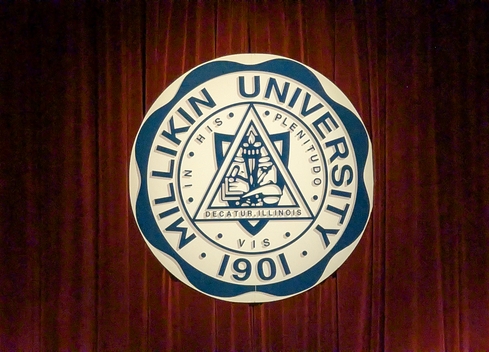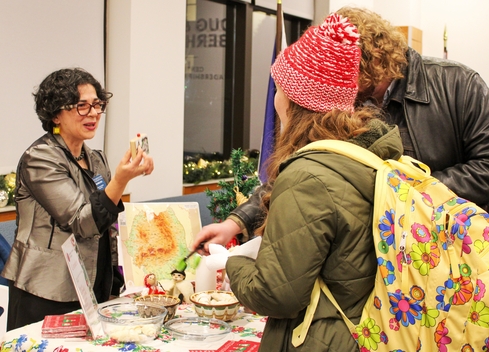Investing in Millikin
“Really Good People Doing Really Good Work”
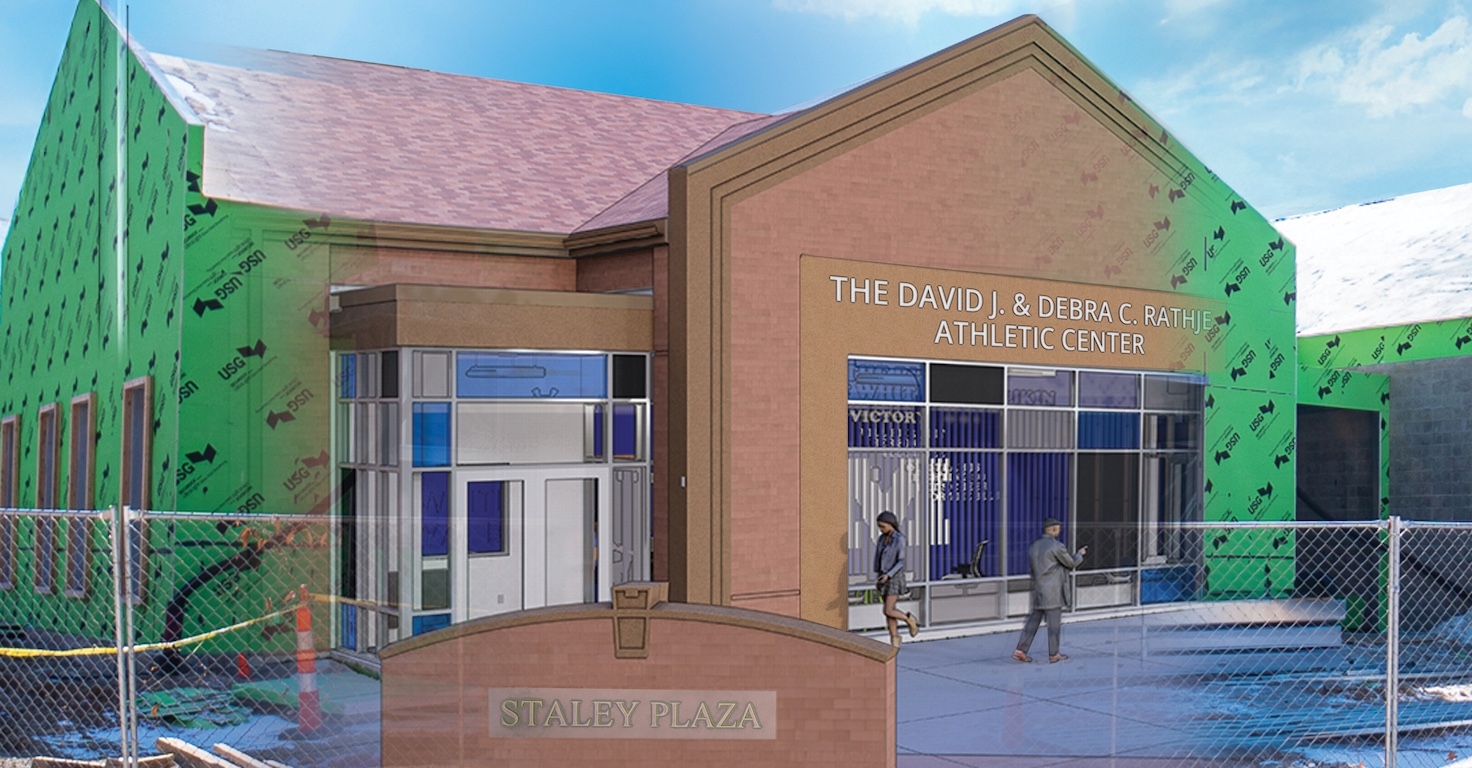
-
When Dr. James Reynolds returned to his hometown in the summer of 2020 to serve as Millikin University’s 16th president, it was during a watershed moment — not just for Millikin, but for the higher education industry as a whole. In addition to the obvious threats to global health and wellness, the COVID-19 pandemic created a very specific set of obstacles for colleges and universities, requiring them to pivot in ways that were — to borrow an instantly infamous word — unprecedented.
Rather than welcoming students back to campus rejuvenated by a restful spring break, many universities found themselves delaying the start of classes to allow themselves to strategize.
Rather than plunging headfirst into the back half of the semester, faculty were faced with the necessity to drastically shift instructional methods with virtually no warning.
Rather than bursting with the typical spring hubbub of student activities, campuses quieted to a whisper as their community members were sent to study and work from a distance.
And rather than preparing for the joy of a vibrant Commencement ceremony, institutions were forced to figure out just how to acknowledge the accomplishments of their students at a time when celebrating together seemed all but impossible.
By the time Dr. Reynolds took the reins from Dr. Patrick E. White in July 2020, much of Millikin’s pandemic response plan had already been put into action. Millikin’s administration, faculty and staff worked tirelessly to create a safe learning environment for all members of the Millikin family while doing their best to continue to forge connections and provide students with the Performance Learning education for which the University is known. Upon his arrival, Dr. Reynolds noted that Millikin’s ability to adapt and change to meet the needs of its students even in a time of uncertainty was successful due to “really good people doing really good work.”
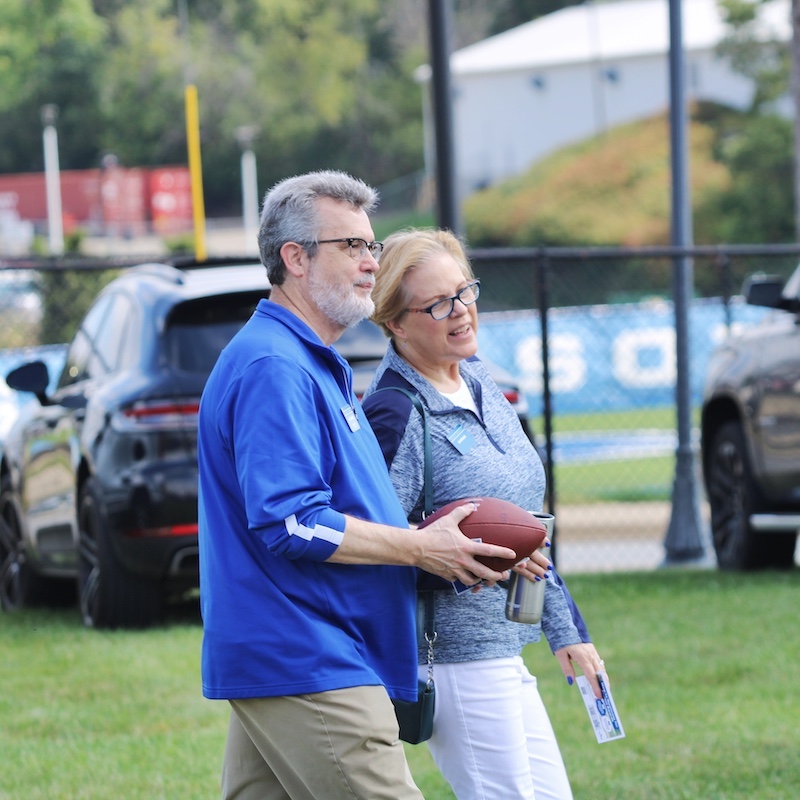
In hindsight, though, Dr. Reynolds acknowledges that while the pandemic provided Millikin with the opportunity to tangibly put its passion, creativity, strength and resilience into practice like never before, it also created unique challenges for an institution that thrives on community.
“The biggest challenge was not being able to do what Millikin has always done. That first year, we were unable to have musical or theatrical performances, we canceled all the athletic schedules, and we had to be isolated from each other,” said Dr. Reynolds. “Small colleges and universities are used to being in contact with people, and we lost a lot of that.”
Nearly five years later, as he prepares for his retirement, Dr. Reynolds is further able to view this particular era in the University’s history through a slightly different lens — one that brings into focus a paradigm shift that he believes has shaped Millikin for the better, causing the Big Blue family to look at one another with a bit more care, compassion and grace.
“That was a good evolution,” Dr. Reynolds said. “We can be more mindful of each other, recognize that not everyone’s always having a great day, and see if we can do something to help with that.”
Receiving this same focus and concern as a college student himself is part of what inspired Dr. Reynolds to pursue a career in higher education that has lasted more than 36 years. “I’ve always loved this profession because it means something to me. I know what going away to college meant to me, not knowing anything about higher ed,” he said. “The people at my alma mater took care of me and gave me the chance to be successful. I’ve benefited from a small university and caring faculty and staff who saw something in me that I didn’t see in myself.” Dr. Reynolds has served alongside Millikin faculty, staff and administration with those same priorities, striving to carry that good work forward.
-
- We know what the big picture is: helping students. That’s a really enviable strength,” he said. “I’ve been to four different institutions in my career, and while they’ve all said it, this is the first place that really lives that out.
— Dr. Jim Reynolds, -
"Our faculty have made some really good decisions about how students should progress through the curriculum on the road to graduation. I think the people who work here are another of our strengths. They’re caring and considerate and focus on the right things. I’m proud of them.”
While that focus is most assuredly student-centered and informs all he does as President, Dr. Reynolds has had to keep many other challenges and opportunities in his line of sight. Millikin’s difficult financial position — while certainly not unique to Dr. Reynolds’ tenure — has been a particular area of concern during his time at the University and has required a lot of focus from all corners of the institution. And just as was true of the pandemic, these difficulties are not unique to Millikin.
According to the National Student Clearinghouse Research Center, the landscape of higher education is changing drastically as the enrollment pipeline of traditional undergraduate students continues to shrink. Across the United States, four-year private institutions have seen first-year student enrollment decline more than 6%. Among four-year institutions with high shares of Pell-eligible students, the decline has increased to 10%. This shrinking pipeline both creates financial challenges and makes student recruitment a more difficult task.
“Recruiting more students or retaining a larger proportion of students who come to us is going to be challenging demographically,” Dr. Reynolds said. “We’re behind the curve, because there just aren’t going to be as many high school seniors. That’s not just a prediction — you can look at birthrates and see that there’s a cliff.”
These ongoing concerns led Millikin administration to go back to the drawing board and reconsider how the University could best leverage its strengths and opportunities to become more attractive to prospective students. “The challenge was to talk about value and why Millikin would be the right place for students to come,” Dr. Reynolds said. “There are 150 colleges and universities in Illinois that all want the same group of students. What’s the value-add to come to MU?”
One of Millikin’s newest efforts in addressing these enrollment concerns and recruiting new students has been the inception of the Millikin Tuition Promise and Big Blue Pledge: Illinois Free Tuition Program. Announced in October 2023 and effective for the 2024/25 academic year, the Millikin Tuition Promise reduced Millikin’s full-time undergraduate tuition rate by 36%, bringing the University’s new annual tuition rate to $26,000 before the application of personalized scholarships and financial aid packages. The Promise also guaranteed a base tuition increase of only $1,000 per year in subsequent years.
Furthermore, the Big Blue Pledge represents an investment in Illinois students who may lack the financial options necessary to pursue a college education by covering 100% of students’ remaining undergraduate tuition with Millikin grants and scholarships, following the application of federal and state grants.
The tuition restructuring has begun to pay off for Millikin, as the University enrolled 343 new first-year undergraduate students in Fall 2024, 53% of whom were eligible for Pell grants. This equates to a 5% increase in the number of new first-year students at Millikin over the prior year, a successful metric when compared to the 10% decrease experienced by many similar universities around the country. Enrollment efforts also yielded 35 additional new transfer students, which is a 47% increase over Fall 2023.
While this increase in new student enrollment is a step in the right direction, there is additional work to be done to strengthen Millikin’s financial position. Dr. Reynolds noted that the administration has been diligently working to tease out pertinent, data-driven information that is actionable and will allow the University to make the best decisions going forward.
That commitment to honesty and transparency has also led to improvements in shared governance through the creation of groups such as the Leadership Council and the Millikin University Staff Advisory Council (MUSAC), which Dr. Reynolds notes have served as good communication vehicles and have given a broader group of employees the opportunity to be heard.
-
- Forming small groups around specific tasks and giving them a charge, scope of work and deadlines has helped a lot,” he said. “Higher ed isn’t always that way. We often say, ‘We need to do this,’ and hope someone takes up the mantle. We’ve been more intentional about that.
— Dr. Jim Reynolds, -
Millikin has also recently added a Staff Representative to the Board of Trustees, who joins the Faculty Representative and Student Representative in ensuring that all constituencies at Millikin are heard. “That’s a huge change,” Dr. Reynolds said. “Staff never got a voice before with the Board of Trustees. Having more people at the table has been really good.”
When considering all that has been accomplished over the past four and a half years, Dr. Reynolds can rightfully feel a sense of pride in the good work of Millikin. The University launched “The Millikin Difference,” its newest Strategic Plan; provided Performance Learning opportunities that are second-to-none; demonstrated academic excellence; displayed award-winning athletic prowess; developed state-of-the-art facilities, such as the Campbell Family Nursing Simulation Center and the David J. & Debra C. Rathje Athletic Center — and so much more.
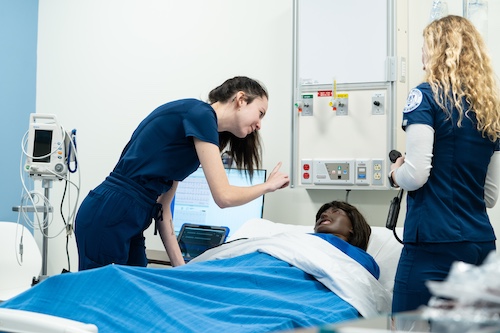
Just as it does with every person who walks through its halls, Millikin has shaped Dr. Reynolds in significant ways. “This has been such a wonderful place for Sue and me,” he said. “It has helped me to recognize that there are seasons in someone’s life, and this is the end of my professional season. It’s helped me to codify some things that are really important to me.”
And just what are those things? What does this next big season of life — retirement — bring? Dr. Reynolds and Sue see themselves relocating to be near their daughter Amanda and her family, including their grandson Noah and a second grandson born in January.
“I’d love to be able to call them up and say, ‘Come over for dinner on Thursday,’ or be able to take my grandson to soccer practice on Saturday,” he said. “I struggled with work-life balance for a long time … I know that I could have been much better on the ‘life’ side of the balance sheet. Now, to use a golfing analogy, I’m on the back nine. I don’t know if it’s the 10th tee or the 18th green, but it’s the back nine, and with whatever time I have left, I want to pay attention.”
“I’ve always thought, ‘Have I been able to improve the way people think about the institution? Have I taken good care of the students? Have I made it a place where people want to work?’ Those are the most important things to me. I’ve given MU everything I had, and now it’s time to let someone else do the same.”
